_We may earn revenue from the products available on this page and participate in affiliate programs. Learn more ›
_
Best Overall

Federal Premium Heavyweight TSS Turkey Shotshells
Best Lead Load
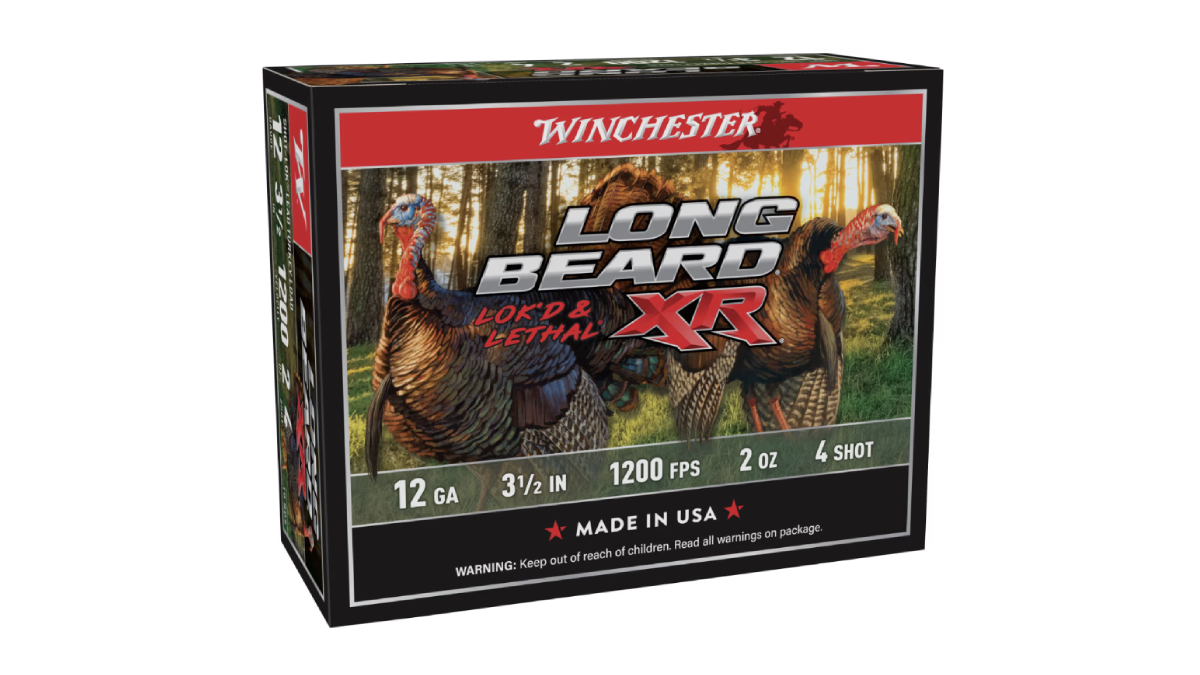
Winchester Long Beard XR Turkey Shotshells
Best Budget Load
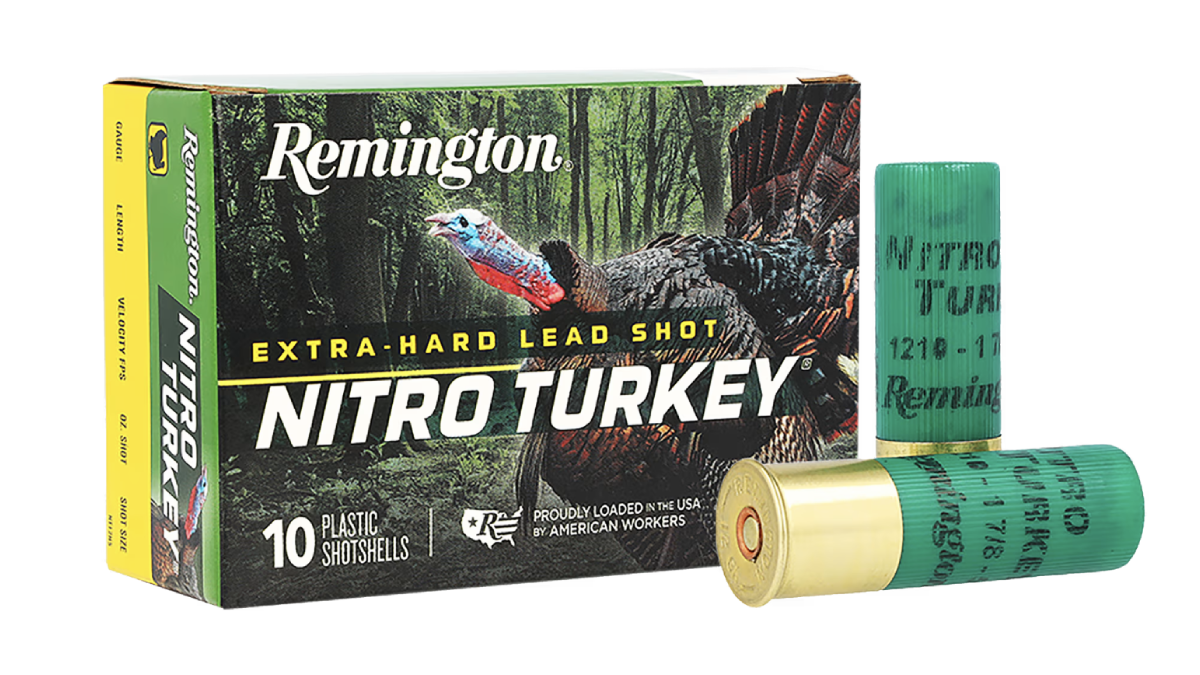
Remington Nitro Turkey Shotshells
Turkey hunters are fanatical about finding the perfect turkey loads. While turkey shotguns
haven’t changed too much in the last few decades, loads—including 12-gauge, 20-gauge, and .410 bore—have evolved dramatically. The advent of highly-effective non-toxic shot such as tungsten and bismuth along with updates to traditional lead shells have pushed the limits of what we can expect from our scatterguns. Today’s turkey hunters are getting away with higher gauges, lighter loads, and farther shot distances.
For this roundup, I drew on decades of personal turkey hunting experience and the recommendations of some of the deadliest turkey hunters I know in order to pick a handful of the best loads you can find. Loads had to be widely available and have a track record of performance behind them.
If you’ve spent any time hunting turkeys, you know that not all shot opportunities are the same. Picking the right one for the job is about more than simply throwing the tightest pattern the farthest—you need to consider the specific situation and how a load will pattern and perform. Wherever you chase birds, and whatever you prefer to chase them with, there are a ton of awesome shotshells available.
Here are the year’s best turkey loads from Winchester, Federal, and more, along with guidance on how to pick the right one for your needs.
The Best Turkey Loads
Best Overall: Federal Premium Heavyweight TSS Turkey Shotshells
Best Lead Load: Winchester Long Beard XR Turkey Shotshells
Best Budget Load: Remington Nitro Turkey Shotshells
Best for .410 Bore: Hevi-Shot Hevi-18 TSS
Best Non-Toxic Newcomer: Boss Tom Tungsten Shotshells
Best 20-Gauge: Winchester Supreme Double X Turkey Load
Best Overall: Federal Premium Heavyweight TSS Turkey Shotshells
Best Overall

Pros
Extremely dense tungsten shot with tight patterns
Hard-hitting
Cons
Price
Tungsten and bismuth shot have taken the turkey hunting and waterfowling world by storm, and Federal TSS loads are among the best. Non-toxic loads began as an alternative to steel for waterfowl hunters but were quickly recognized for their lethality and long-range performance in the turkey woods. Tungsten is considerably denser than lead, meaning it not only maintains its shape when fired, but also carries more energy farther.
Federal uses an 18 gm/cc density tungsten that is 22% denser than standard tungsten and 56% denser than lead. This extremely dense shot flies farther and hits even harder than standard tungsten, providing deadly accuracy and power at range. Heavyweight tungsten lets you fit more, smaller, harder-hitting pellets into each shell.
The FliteControl Flex wad is a full-length wad that not only ensures proper flight through ported and standard turkey chokes, but also protects your barrel from being damaged by the extremely hard tungsten shot. The dense shot and proprietary wad basically eliminate shot deformation, dramatically reducing flyers and tightening up the pattern so you can put more hits on target at longer ranges. This also allows you to get much more performance out of higher gauges if you prefer to hunt with a lighter-weighing and recoiling shotgun. I personally know several people who have been experimenting with TSS in .410 with deadly results.
The only downside of Federal TSS, and non-lead loads in general, is price. A box of five tungsten shells can go for anywhere between $50 and $100 making them significantly more expensive than their lead counterparts. Turkey hunters don’t usually go through a ton of shells, so once you’re sighted in and patterned, the cost of running TSS is much more manageable. If you demand the absolute best and most lethal turkey load and are willing to pay for it, Federal TSS is in a tier of its own.
Specs
Gauges: 12-gauge, 20-gauge, .410 bore
Shell Sizes: 2 3/4 – 3 1/2
Shot Sizes: 5,6,7,9
Shot Type: Tungsten
Best Lead Load: Winchester Long Beard XR Turkey Shotshells
Best for 12 Gauge

Pros
Affordable compared to denser-than-lead shot
High hit percentage at long range
Knockdown power thanks to increased penetration
Shot-Lok technology
Cons
Toxic lead
Ask the best turkey hunters you know what load has bagged them the most birds and Winchester’s Long-Beard XR is sure to be mentioned more than a few times. Empirically and anecdotally, the Long-Beard XR is one of the best lead turkey loads (and best loads, period) on the market.
Featuring Shot-Lok technology, Winchester’s Long Beard XR provides tight shooting patterns, long-range accuracy, and a higher percentage of pellets on target at range. Shot-Lok is basically a liquid resin that is applied to the shot. The resin dries, holding the shot together, but disintegrates upon firing. This protects the shot during in-bore acceleration so pellets maintain their round shape. Because of the Shot-Lok technology, traditional lead shot gains superior flight and lethality, allowing the Long-Beard XR to approach the performance of high-dollar tungsten and bismuth loads at a price that, while not cheap, is still a fraction of the cost of non-toxic options. You can pick up a box of 10 shells for around $25, which is anywhere from half to a quarter the cost of something like Federal TSS.
For a 12 gauge, it’s hard to beat the 3” #5, 1 ¾ oz load spitting at 1200 fps. I have personally killed more turkeys with this particular load than any other of the good long-range turkey loads. I’ve seen it drop turkeys at nearly 50 yards with a bead sight out of a stock Mossberg 500. An optic and an aftermarket choke
can stretch this load even farther. With the right setup, ethical shots at 60-plus yards are absolutely achievable.
Specs
Gauges: 12- and 20-gauge
Shell Sizes: 2 3/4 – 3 1/2
Shot Sizes: 4,5,6
Shot Type: Lead
Best Budget Load: Remington Nitro Turkey Shotshells
Best Lead

Pros
Tight pattern
Affordable
Widely available
Extra hard lead shot
Cons
Toxic lead
The Remington Nitro Turkey is one of the best and most prolific lead turkey loads on the market. While it might not have the hype of modern tungsten and bismuth loads, Nitro Turkey has killed a LOT of birds over the years. I hunted with Nitro Turkey in a 20 gauge 3” #5, 1-1/4 oz load for most of my childhood and adolescence and have the beards to attest to its effectiveness.
One of the main features of the Nitro Turkey is the patented Power Piston one-piece wad. The Power Piston wad holds the shot and creates an air buffer between the propellant and the shot, protecting it from the explosive forces released when the gun is fired. This is complemented by polymer buffering mixed into the shot that fills in empty space between pellets so the shot comes out of the gun in an extremely tight package without bouncing around during flight. The lead shot Remington uses for the Nitro Turkey is also manufactured to be harder and more consistently round than many traditional lead loads.
The Nitro Turkey’s hard lead shot, wad construction, and polymer buffering ensures longer range, tighter patterns, and greater lethality by reducing shot deformation, so more shot makes it to the target with maximum power. All of the Nitro Turkey loads in both 12 and 20 gauge average between 1185 and 1300 fps.
While there may be niche lead loads out there that are “better,” choosing a budget turkey load
can be more cost-effective—and it’s hard to beat the price and performance of the Nitro Turkey for a load you can find at any Walmart or sporting goods store. At roughly $14 for a box of 10 shells, Remington Nitro Turkey is extremely affordable and widely available across the country. If you’re looking for a great lead turkey load that you can find just about anywhere and that won’t break the bank, the Remington Nitro Turkey is an excellent choice.
Specs
Gauges: 12- and 20-gauge
Shell Sizes: 2 3/4 – 3 1/2 inches
Shot Sizes: 4, 5, 6
Shot Type: Lead
Best for .410 Bore: Hevi-Shot Hevi-18 TSS
Best for .410 Bore
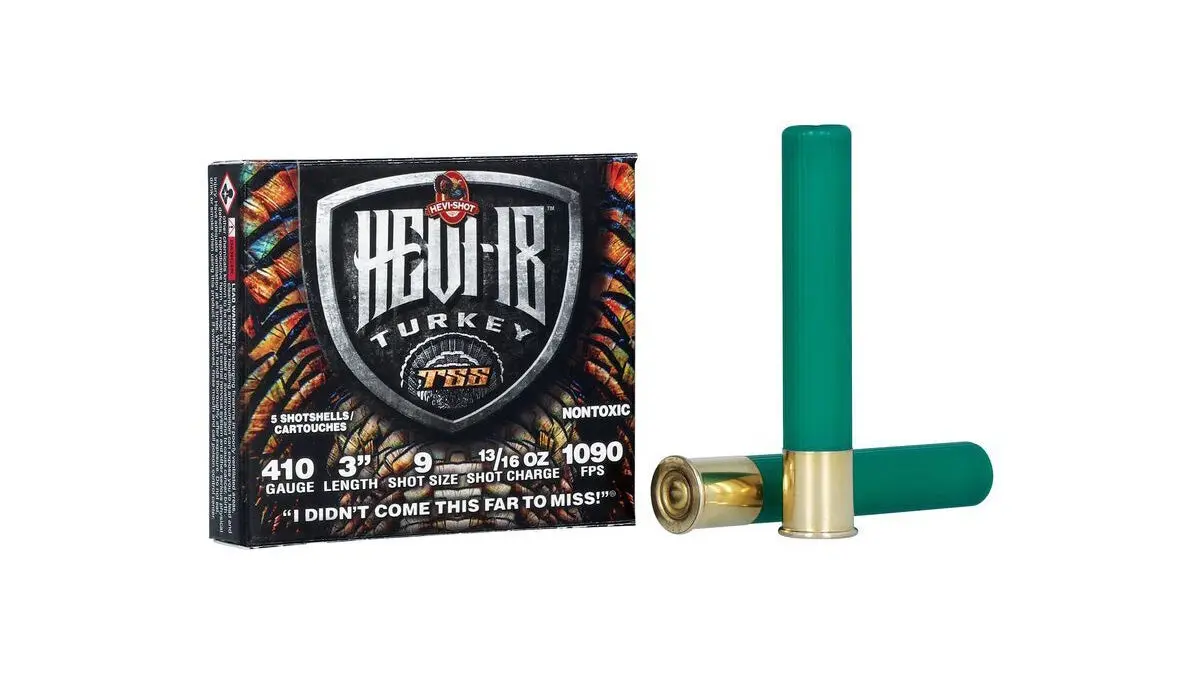
Pros
High-velocity loads
Surprising amount of downrange energy
All-weather reliability
Cons
Expensive
In the not-so-distant past, the tiny .410 bore was relegated to killing squirrels, snakes, and rats around rural homesteads. Modern shotshell advancements have transformed what was once considered a simple youth starter or pest exterminator into an acceptable gobbler gun. We can thank TSS for helping the masses rethink previous stances on whether the .410 bore could drop turkeys. Because tungsten is 56% denser than lead, manufacturers can stuff a .410 shotshell with No. 9 pellets that offer comparable energy and penetration to No. 5 lead pellets shot from the same gun.
Hevi-Shot’s Hevi-18 TSS .410 loads push high-density pellets downrange at high velocities, turning lightweight, mild-recoiling scatterguns into viable turkey-walloping machines, especially for hunters who like the thrill of calling longbeards in within sneezing distance.
Specs
Gauges: 12-, 20-, and 28-gauge; .410 bore
Shell Sizes: 2 3/4 – 3 ½ inches
Shot Sizes: 7, 9
Shot Type: Tungsten
Best Non-Toxic Newcomer: Boss Tom Tungsten Shotshells
Best Non Toxic

Pros
Affordable
Attention to detail
Impressive shot pattern density
Cons
No retail availability
Limited payload options
Boss is a relatively new kid on the block, but its non-toxic waterfowl and turkey loads have quickly gained traction as some of the best on the market. Guided by a conservation ethos, Boss strives to make non-toxic loads that are both environmentally friendly and extremely deadly in order to reduce the number of wounded and crippled birds. While best known for its waterfowling loads, Boss has an equally impressive line of Boss Tom turkey loads as well.
What makes Boss different is its attention to detail and its direct-to-consumer business model. Boss Tom loads feature an extremely dense 18g/cc Tungsten and are available in 12, 20, 28, and .410 gauge. The 12 gauge 3” 2 oz, #7 (370 pellets per shell), or #9 (724 pellets per shell) are the perfect loads for most turkey hunting situations. Boss Tom shells feature a full-length wad and fiber buffering, keeping your barrel safe from wear and tear, eliminating shot deformation, and maximizing pattern density and terminal performance.
Boss sells their shotgun shells direct to consumers, making them a little harder to get your hands on but also significantly more affordable than a lot of non-toxic loads. You won’t be able to grab a box off the store shelf in a pinch, but the price saving will help you stock up when it’s time to resupply. At about $45 for a box of 5 shells, and offering free shipping on orders over $100, Boss Tom is pretty reasonably priced compared to other non-toxic loads.
Specs
Gauges: 12-, 20-, and 28-gauge; .410 bore
Shell Sizes: 2 3/4 – 3 inches
Shot Sizes: 7, 9, 10
Shot Type: Tungsten
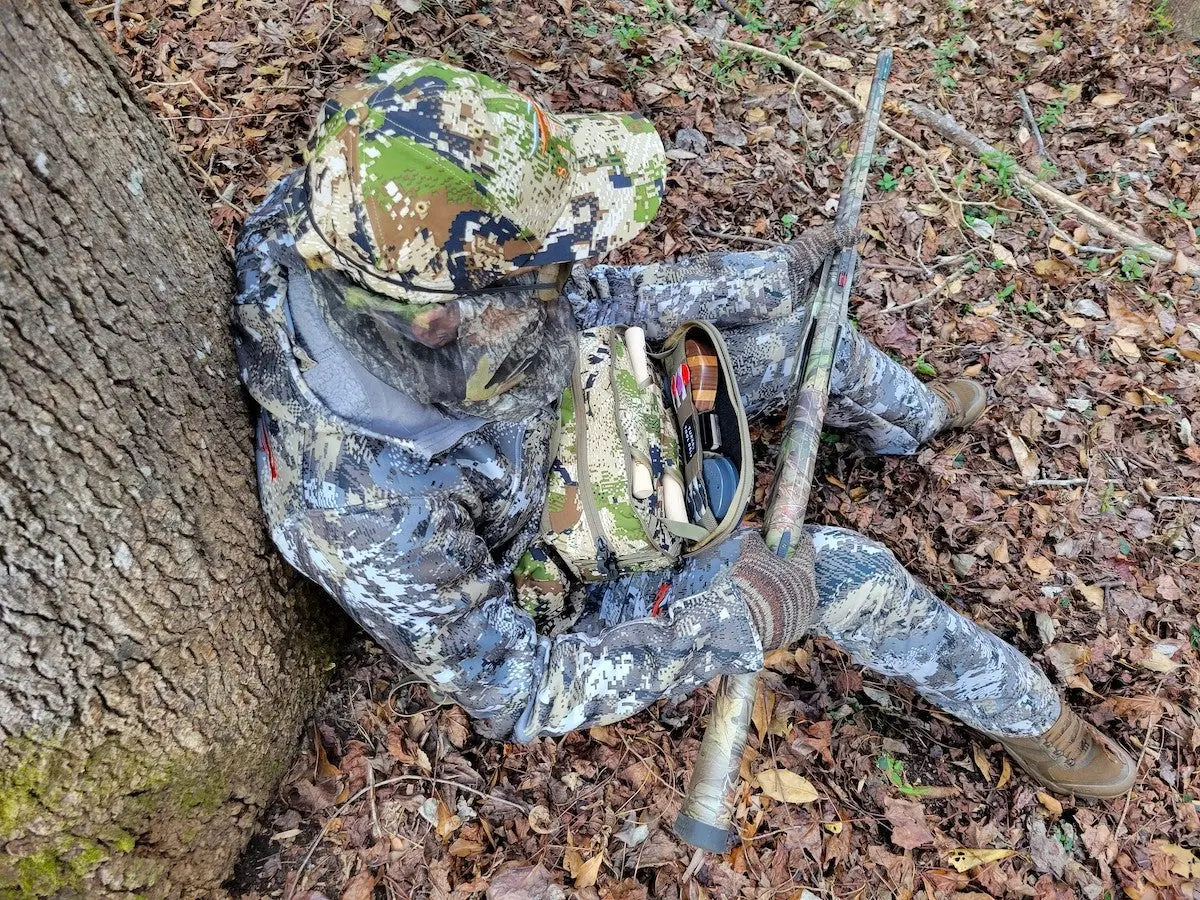
I’ve spent a ton of hours in the turkey woods testing out loads. (Photo/Alice Jones Webb)
Best 20 Gauge: Winchester Supreme Double X Turkey Load
Best for 20 Gauge
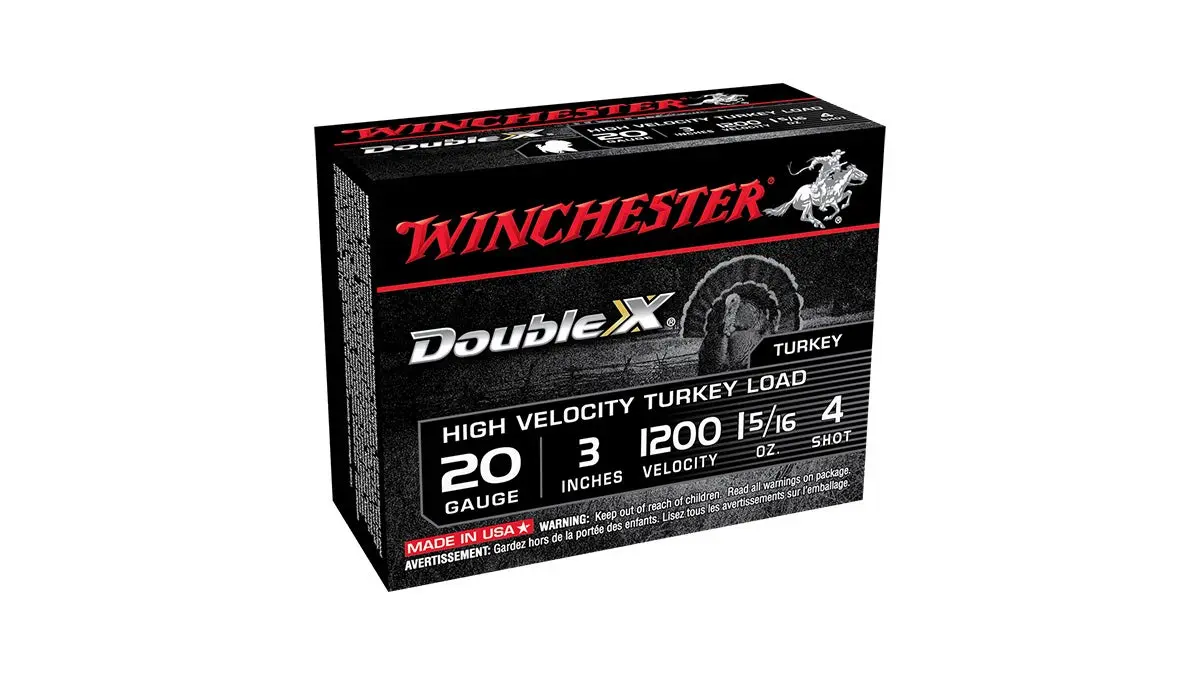
Pros
Highly affordable
Great velocity and penetration capabilities
Consistent and reliable
Widely available
Cons
Contains lead
Limited range capabilities
Winchester Double X ammunition has been a favorite of turkey hunters since it first hit the market in 1990. It’s kind of like Grandpa’s old-reliable pump action — sure, there are faster and fancier options on the market, but this one is time-tested and super reliable. Like Grandpa always said, “If it ain’t broke, don’t fix it.”
Generations of turkey hunters cut their teeth with these loads (me included). However, it isn’t simple nostalgia that makes this my favorite 20-gauge load. These loads feature extra-hard, fully buffered copperplate shot and a magnum load of specially blended propellants, which allow them to punch well above their weight class.
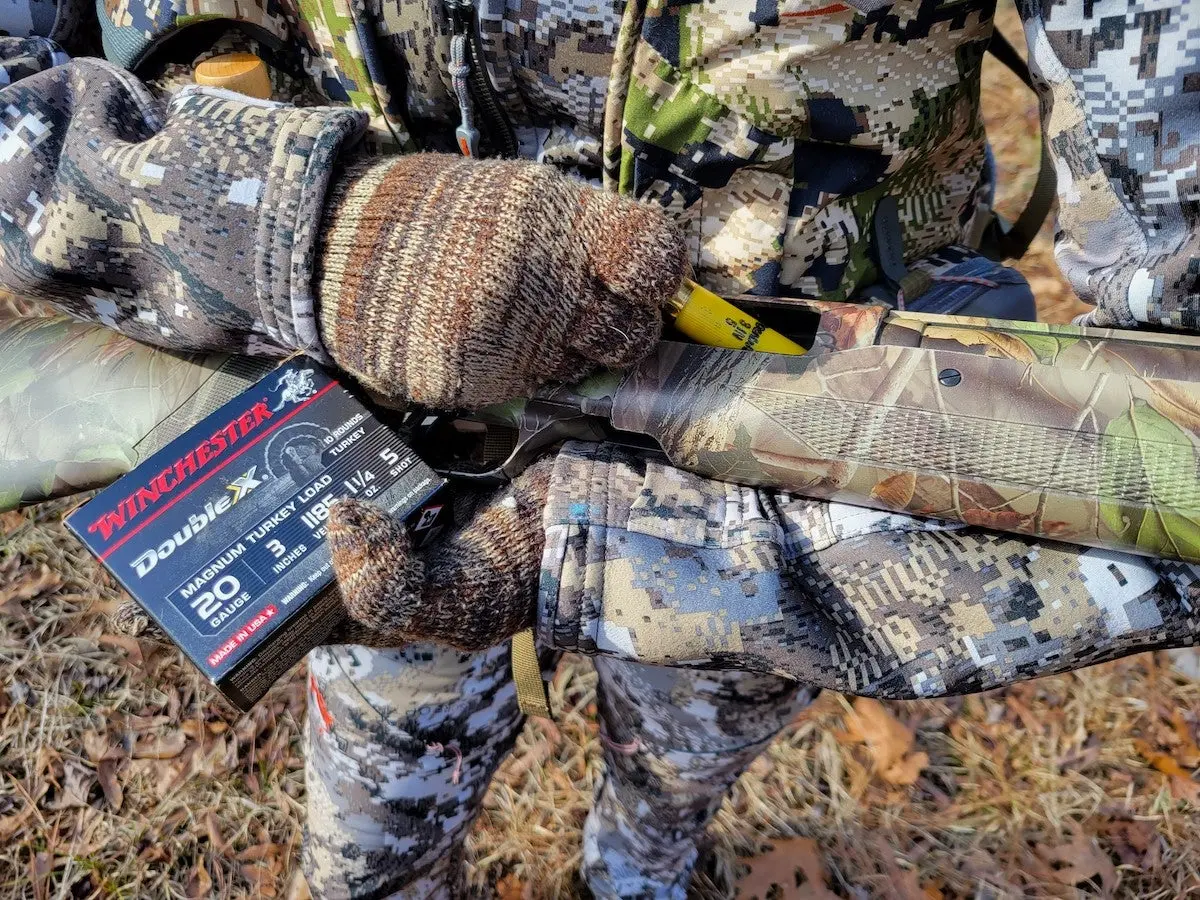
I’ve had a lot of success with the Winchester Supreme 20-gauge shotshells. (Photo/Alice Jones Webb)
Still, these aren’t tungsten loads, so they have limited range capabilities. But if you like to call big gobblers off the roost to come sit in your lap, Winchester Double X is hard to beat. They deliver excellent close-range terminal performance. Plus, they cost only a fraction of what more lavish loads are running these days. If you can’t stomach the idea of burning through an Alexander Hamilton every time you pull the trigger, these loads will make you happy. That affordable price tag also makes Winchester Double X a practical option for young hunters who may run through more ammo.
This is my go-to 20 gauge load, partly because I’m frugal and partly because I just plain trust them. I’ve dropped plenty of birds with Double X, both before and since TSS became the cool kid of turkey hunting loads.
Specs
Gauges: 12- and 20-gauge
Shell Sizes: 2 3/4 – 3 1/2
Shot Sizes: 4,5,6
Shot Type: Copper-plated lead
Buying Guide
Price
Price is a major factor when considering turkey loads. While you’re probably not going through a ton of shells in the course of a season, between sighting in, patterning, and hunting, the cost can add up. Lead loads tend to be significantly less expensive than tungsten and bismuth loads simply due to the cost of the raw materials and manufacturing process.
On average, you can expect to spend between $1 to $3 dollars per shell for a lead turkey load, and anywhere from $5 to nearly $20 per shell for some high-end tungsten super shot and other premium non-toxic options.
Recoil
If you are sensitive to recoil, or hunt with someone who is, you may want to factor that into your decision to pick a specific load. Many variables—such as your body type and the gauge and chambering of the gun—go into the amount of recoil and how you are able to handle it. If you’re not a fan of getting mule-kicked by your turkey gun, picking a higher gauge or a smaller charge and payload may be something to consider.
Materials like TSS shot have dramatically increased the range, pattern density, and lethality of modern loads so you can get away with higher gauges and lighter kicking loads.
Performance
At the end of the day, performance is what matters in a turkey load. Pattern density, effective range, and energy on target are what kill a gobbler. In a perfect world, you’d want to test a variety of loads and see what works best for your gun. There’s also a ton of data available from the manufacturers, outdoor media, and independent enthusiasts to help you pick.
FAQs
Q: Is a 3” or 3.5” shell better?
In theory, a larger shell can hold more shot and a bigger powder charge for increased power and range, but at the cost of increased recoil. In practice, shell length is largely irrelevant, and the powder charge and payload are the numbers to pay attention to. There are plenty of more important factors than the chamber size, and not all guns are chambered for magnum 3.5” shells. I’ve killed plenty of birds with a 2-¾” load, but for me, a 3” shell is just right.
Q: What is the best shot size for turkey?
When it comes to shot size, the larger the number, the smaller the shot. With lead, anything from #4 to #6 is a perfectly good choice for hunting turkeys. I personally like a #5 shot size. Shot size gets a little more complicated with non-toxic shot due to the weight and density of the shot, but most people recommend a #7 or #9.
Q: How to pattern your turkey loads?
To pattern your shotgun, set up paper targets at varying ranges and see how the load performs at each range. I personally like to shoot at 10 to 20-yard increments out to roughly 60 yards. It’s best to use targets with the silhouette of a turkey’s head and neck so you have an idea of how many pellets land in the kill zone.
If you’re testing out multiple loads, use fresh targets for each range and count how many pellets are on paper, how many are in the kill zone, and measure roughly how tight the pattern is. Note flyers, strange tears from deformed pellets, and if there are large gaps in the pattern. You may want to try different choke tubes as well to see how that affects the pattern at each range. Then simply pick the best performing load and choke combination for your needs.
Why Trust Us
For more than 125 years, Field & Stream has been providing readers with honest and authentic coverage of outdoor gear. Our writers and editors eat, sleep, and breathe the outdoors, and that passion comes through in our product reviews. You can count on F&S to keep you up to date on the best new gear. And when we write about a product—whether it’s a bass lure or a backpack—we cover the good and the bad, so you know exactly what to expect before you decide to make a purchase.
![Field & Stream [dev]](https://images.ctfassets.net/fbkgl98xrr9f/1GnddAVcyeew2hQvUmrFpw/e4ca91baa53a1ecd66f76b1ef472932b/mob-logo.svg)




